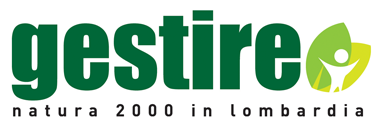The objective of the project GESTIRE is to produce an integrated regional strategy for the management of the whole NATURA 2000 Network of the Italian Region of Lombardy, in line with the European 2020 Biodiversity Strategy, and with the final aim of contributing to restoring and maintaining sites, habitats and species at a favorable status, in an area, such as the Lombardy region, where the impact of industry and population is very strong.
GESTIRE represents a pilot initiative in Italy and a best practice in Europe, which defines the necessary elements for a long-term management program of the Natura 2000 areas, at the same time ensuring the connectivity and functionality of the Network.
GESTIRE is one of the 9 European projects , 3 of them Italian, that the LIFE + program financed for the first time back in 2011 as management and restoration projects for the Natura 2000 Network and for the drafting of the Prioritised Actions Framework (PAF) at a national and regional level. GESTIRE has a duration of 3 years, from October 2012 until September 2015, a budget of 3.259.700 euro and a EU co-financing of 1.626.916 euro (49,91%).
The geographical background
With its approximately 23.800 square kilometers, the Region of Lombardy is located in the biogeographical Alpine and Continental regions. Thanks to its geographical, geological, morphological and climate conditions, the region is rich with natural landscapes as well as different types of habitats and species many of which hold a Community interest. Specifically, the region hosts 242 Natura 2000 sites, close to 15% of its territory, with 194 Sites of Community Importance (SIC) and 66 Special Bird Protection Zones (ZPS). About 4% of the SIC’s surface (224.088) is covered by community habitats. The extension of the 15 “priority” habitats (i.e. those environments with a high risk of disappearing at a continental level) makes up for 21% of the entire habitat surface of Community interest.. In the SIC in Lombardy there are 61 community interest species listed in Attachment II to the “Habitat” Directive (47 animal species – including 13 mammals, 14 fish, 5 amphibians and reptiles, 15 invertebrates – and 14 plants), and over 87 bird species listed in Attachment I to the “Birds” Directive.
For further informations:
Communication plan(in italian)
Other countries best practice (in italian)




